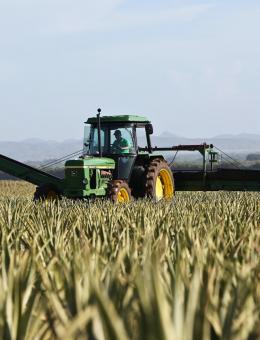
SPRING INTO ACTION
Published 22 February 2025
Every farmer will know that the best-laid plans can easily be up-ended by our capricious weather, and that an element of flexibility is always required to mitigate the effects of the UK’s variable climatic conditions, writes James Hill.
There are several factors to consider when approaching the spring workload. The first will be timing, including in some cases deciding when to desiccate any cover crops. Sustainable Farming Incentive (SFI) rules state that this cannot be more than six weeks before the spring crop is sown, leaving a relatively short time in which to ensure that the cover is eradicated.
Alongside this is the question of when is best to drill spring cereals. Early-drilled crops will likely have better established root systems to deal with potentially dry spring conditions, but cereal seed should ideally go into continuously warming soil, which means avoiding the temptation to sow as soon as there is a brief spell of warmer weather. As ever, a good seedbed is crucial for crop establishment and soil to seed contact is crucial in ensuring good germination. As the old saying goes ‘a crop well sown is a crop half grown’.
Another key consideration is the choice of seed variety. This will depend on several factors, including soil types, proposed harvest date and end user market.
Perhaps the biggest dilemma facing farmers at springtime will be how to make the most of inputs. At a time when the cost of fungicides, herbicides and fertilisers are high - but accepting they are critical to the health of the crop and to yields – making best use of these inputs at the appropriate levels to achieve the optimum yield is crucial.
Tempting though it is to cut back on expenditure on such inputs, this could very much be a false economy. Instead, farmers should be concentrating on ensuring they are wringing every last ounce of benefit from every last drop they use. View this as an investment which should have a return, rather than just another cost.
Ensuring you make best use of inputs means constant field monitoring, frequent discussions with your agronomist and focussing use on those areas which will return the best yield and cutting your losses where crops might already be compromised.
Share this story
Arnolds Keys Blog

OXFORD-CAMBRIDGE-NORWICH: THE REAL GROWTH CORRIDOR
19 February 2025
The announcement of the Oxford-Cambridge Arc, to be endowed with investment in a new rail link between the two cities, will be viewed in this part of the world as... Read more >

TIME FOR LANDLORDS TO GRASP THE EPC NETTLE
14 February 2025
Last week’s announcement of a consultation which is likely to result in all private rented homes having to achieve an EPC rating of ‘C’ or higher by 2030 probably shouldn’t... Read more >

ADDING VALUE WITH THE HUMAN DIMENSION
7 February 2025
We are only one month into the new year, and on the coast at least, a clear pattern is emerging in the market, writes Clive Hedges. Read more >

A CHILL WIND BLOWING FROM ACROSS THE POND
25 January 2025
No matter how much we might like to ‘keep it local’, we cannot avoid events elsewhere in the world impacting on our lives, writes Simon Evans. Read more >
